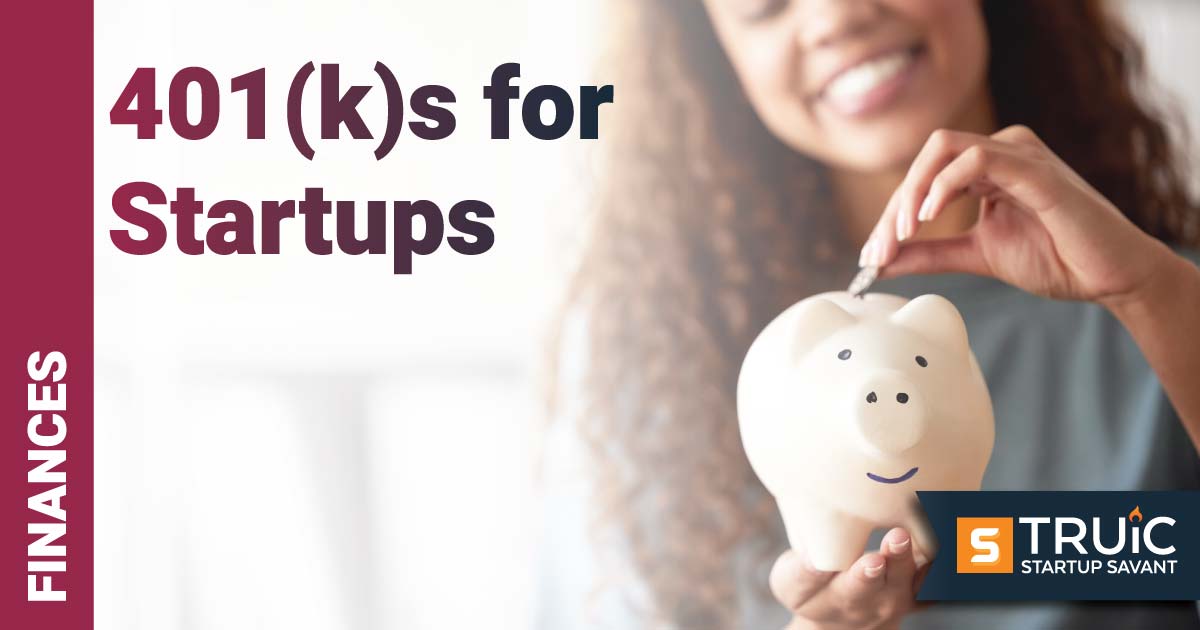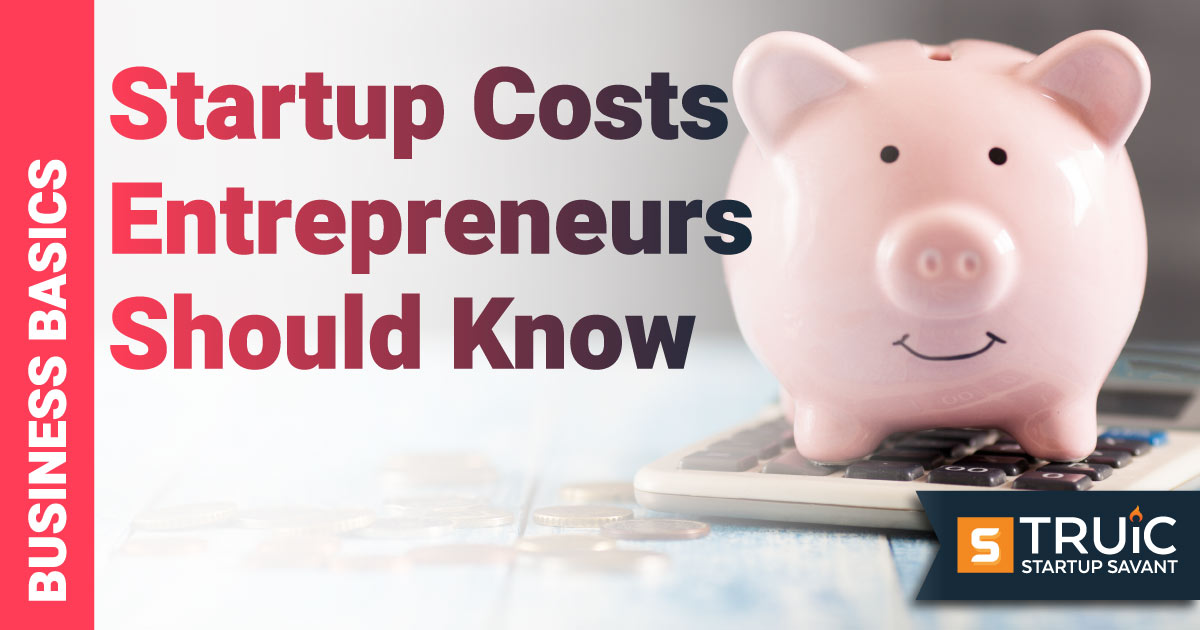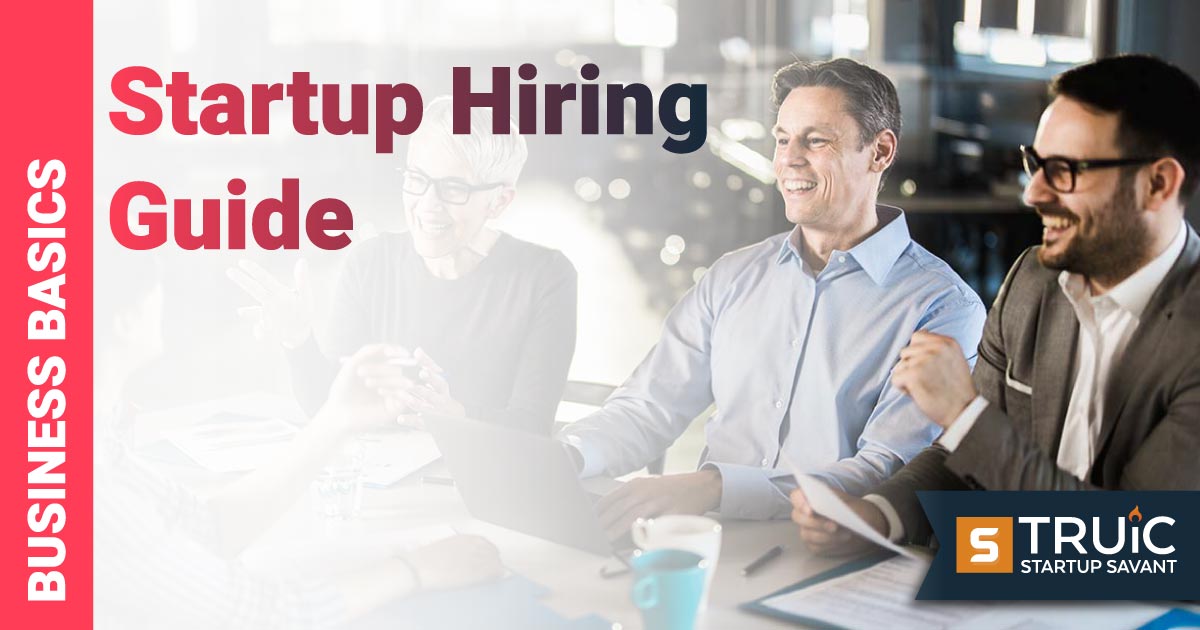401(k) for Startups – What You Need to Know

Last Updated: By Michaela Dale
Retirement savings plans are a major selling point for potential startup employees. One of the most commonly used retirement plans is a 401(k), which allows startup employees to contribute to their retirement and, potentially, receive contributions from their employer as well.
If you’re considering setting up a 401(k) for your startup, look no further. We’re here to help with this guide on what you need to know about startup retirement plans and how to start a 401(k) for employees.
How to Start a 401(k) for Employees
Starting a 401(k) for startup employees has several benefits for hiring, retention, and even taxes. However, before you set up a 401(k) for your startup, you need to determine whether it is the right time for your business to offer a retirement plan.
Even if you decide not to contribute to your employee’s retirement account, there are still administrative fees associated with starting and maintaining a retirement plan. The first step to determining if this retirement plan is right for your startup is developing a strong understanding of what a 401(k) is, how it works, and the retirement plan alternatives available.
In addition to this, we always recommend speaking with an attorney for tax or legal advice.
What Is a 401(k)?
A 401(k) is a type of retirement savings plan a business owner can offer eligible employees. This is an employer-sponsored investment account wherein employees are able to dedicate a portion of their salaries toward retirement. Although it is not required, employers will commonly match employee contributions to incentivize staff as well as receive a potential tax credit and tax benefits.
How Does a 401(k) Work?
When a 401(k) is offered, employees determine the amount they would like to contribute to their retirement account per paycheck. The dollar amount or percentage chosen will be automatically withheld from the employee’s paycheck. The contribution is then invested by a third-party administrator (TPA) or trustee.
The funds collected in the retirement account can be kept there until retirement age or when the employee chooses to withdraw the funds. Employees are able to withdraw the funds at any time, however, if a withdrawal is made before the age of 59 and a half, it will accrue a penalty fee for early withdrawal.
Types of 401(k)s: Pre-Tax vs. Post-Tax
The type of retirement savings plan you choose will impact when funds are deducted from your employee’s paychecks. The two most common plans are traditional and Roth:
- A traditional 401(k) deducts funds from the employee’s paycheck before federal and state taxes are taken out.
- A Roth 401(k), however, deducts contributions after taxes have been taken out.
The key difference between the two is when taxes are taken out. With a traditional 401(k), taxes are taken out whenever a withdrawal is made. Alternatively, Roth 401(k)s are already taxed and, therefore, are not subject to further taxation during a withdrawal.
Other 401(k) plans include:
- Safe Harbor 401(k) plan — Opts your startup out of annual nondiscrimination testing, however, employer contributions are required.
- Solo 401(k) plan — This plan is only applicable if the founder and/or the founder’s spouse are the only employees.
- SIMPLE 401(k) plan — Designed for companies with 100 or fewer employees. This plan has lower contribution limits and no annual testing, however, employer contributions are required.
Benefits of 401(k)s for Startups
While setting up a retirement plan like a 401(k) isn’t the right choice for every startup, there are some benefits to consider. Some of the perks related to offering this type of retirement plan for your eligible employees include tax advantages and potential increases in recruiting and retaining top talent.
Deductibles, Tax Credits, and Tax Benefits
Matching your employee’s contributions is a deductible expense, meaning tax savings for your startup. Plus, eligible small business owners can receive a $500 tax credit for setting up an employee retirement plan for the first three years it is offered.
Tax-Free Bonuses
Retirement plans also may mean tax savings for employees as well. You can give employees a tax-free bonus by contributing to their retirement fund rather than offering a standard, taxed bonus, allowing them to keep the full amount.
Hiring and Retention
Retirement plans are valuable tools for hiring and employee retention as an attractive benefit of their employment as well as a signal of your startup’s financial health.
Personal Benefits
If you opt to deploy a 401(k) retirement plan for your startup, you can also benefit as a founder if you are eligible to contribute to your business’s retirement plan, saving you money on your personal tax returns.
How to Set Up a 401(k)
If you’ve chosen to start a 401(k) retirement plan for your startup, these are the steps you need to take to set it up, starting with choosing the right retirement plan for your startup.
1. Choose the Type of 401(k) Plan
Your first step towards setting up your startup retirement plan is to determine the right plan for your business and its employees. There are five types of 401(k) plans to choose from:
- Traditional 401(k) plan
- Roth 401(k) plan
- SIMPLE 401(k) plan
- Safe Harbor 401(k) plan
- Solo 401(k) plan
Traditional and Roth 401(k) plans are the most common. However, the right retirement plan for your startup is dependent largely on the number of employees, how much (if any) you choose to match, and whether funds will be taken out pre-tax or post-tax.
2. Iron Out Policy Details
Next, you have to decide on policy details, including contribution limits, vesting information, and how much your startup will match. These policy details should be crystal clear in writing for employees opting into the 401(k).
Contribution Limits
This is essentially the maximum amount of funds your employees are able to contribute to their 401(k). This is especially important to determine in tandem with your matching contribution amount.
Employer Contribution
While matching your employee’s contributions isn’t required for traditional, solo, or Roth 401(k) plans, it is a great way to attract top talent, retain employees, and show them that you care about their well-being. Plus, contributions can be written off as a business expense on your startup’s income tax return. Determine the amount your startup will be contributing, if any, and add these to your policy details.
Vesting Information
You should also include information about when contributions will become vested (or when employees will have access to the company’s contributions).
3. Find a Trustee
When contributions are taken out of your employee’s paychecks, they need to be managed and accounted for to ensure they end up in the right place. To do this, your startup needs a trustee or third-party administrator (TPA) to be responsible for investing these funds.
We recommend consulting with an Employee Retirement Income Security Act (ERISA) attorney for legal or tax advice on whether your startup should be its own trustee or outsource this role to an external company.
4. Adjust Accounting Procedures
Once your policy is set, your accountant will need to update their processes to ensure that all contributions are accounted for and in the right place. Especially if you are matching employee contributions, confirming that the financial projections and overview are accurate.
Alternatives to 401(k) Plans
If you aren’t sure whether a 401(k) is right for your company, there are other options available to provide valuable retirement planning for your startup. Two of the most common 401(k) alternatives are SEP IRA and SIMPLE IRA:
SEP IRA
A simplified employee pension (SEP) IRA is a retirement plan for business owners and self-employed individuals. This is a great option for solopreneurs or companies operated by a handful of co-founders, as contributions can only be made by business owners.
SIMPLE IRA
A savings incentive match plan for employees (SIMPLE) IRA is a retirement plan for companies with 100 employees or less. While this plan is true to its name and relatively easy to implement, it does require employer contributions.
FAQ
Can startups offer a 401(k)?
Yes, startups can offer a 401(k) plan to their employees. Early-stage startups, however, may not offer 401(k)s or other retirement plans as their capital is limited at this stage and used primarily for scale. In lieu of this, many startups choose to offer profit-sharing plans instead.
What is the average 401(k) match for startups?
On average, companies match between 4% to 6% of an employee's salary or $0.50 on the dollar. However, this varies from company to company.
How much does it cost an employer to set up a 401k?
The cost of setting up a 401(k) is dependent on the size of the business and its staff. However, setting up a 401(k) could cost your startup between $500-$2,000.
Can you set up a 401k for one employee?
Yes, you can set up a 401(k) for one employee if you only have one staff member. If you have more than one employee, you can only exclude employees from a 401(k) plan if they have not reached the age of 21, have not completed a year of employment at your company, or “are covered by a collective bargaining agreement that does not provide for participation in the plan, if retirement benefits were the subject of good faith bargaining,” according to the Internal Revenue Service.
How many employees do I need to set up a 401k?
You can set up a 401(k) no matter how many employees you have. In fact, the SIMPLE 401(k) plan is built for businesses with 100 or less employees. However, it does require employer contributions.
Additionally, you can set up a 401(k) without any employees. A Solo 401(k) plan is a great option for business owners as well as their spouses to reap the benefits of a 401(k) without employees.


